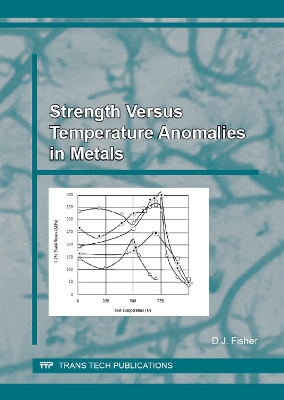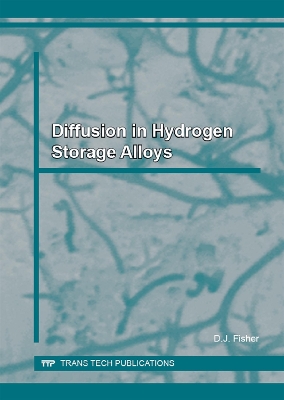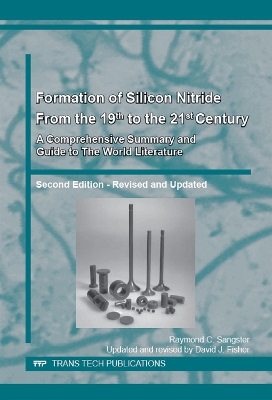Materials Science Foundations
3 primary works • 4 total works
Volume 86
There are relatively few revolutions in the venerable and rather staid field of metallurgy. One can count among them the advent of metallic glasses, of superplastic metals, or of memory-alloys. The latest revolution involves the relatively staid topic of alloy formulation, but is all the more startling because the resultant materials break every long-cherished rule of alloy design. In particular, the famous empirical rules of Hume-Rothery are completely ignored. That is, in the archetypal high-entropy alloy, five metals are alloyed together in equal proportions regardless of atomic-size difference, valence or crystal structure. Commonsense would tell any experienced metallurgist that that could result only in a uselessly brittle mass of intermetallic compounds. But in a truly paradigm-shifting manner, Professor J.W.Yeh of Taiwan correctly predicted that a high configurational entropy could suppress the appearance of detrimental intermetallic compounds and lead to simple familiar microstructures having very useful properties. High-Entropy Alloys can exhibit, for instance, astounding hardness and strength and also have a very good corrosion resistance. The present book summarises the microstructures and properties of all of the high-entropy alloys.
Volume 88
Perhaps the best-known aspect of the behavior of metals, and indeed of most materials, is that they weaken with temperature. This weakening is however a problem in some applications. Only tungsten for instance, with its naturally high melting-point, was suitable for the manufacture of the filaments of incandescent light-bulbs. Even then, it was necessary to add oxide particles having a yethigher melting-point in order to prevent the weakening effect of grain-growth. These are alloys however which can be said to be weakened by heat, but nevertheless 'hang on' to enough strength to perform their task. The real boon would be an alloy which actually, as it were, 'rose to the occasion'. Such a class of alloy exists, and is the subject of this book. It brings together everything which is known about the yield strength anomaly; both theoretically and experimentally.
Volume 89
This volume presents a summary of relevant diffusion data. Enormous amount of research has been expended on the option of storing the hydrogen in solid metal alloys. The loading of metals with hydrogen, and its extraction, depends upon several processes. It is found that the slowest, and therefore the rate-determining process is hydrogen diffusion in the solid.
Volumes 84-85
Formation of Silicon Nitride from the 19th to the 21st Century
by Raymond C Sangster and David J Fisher
The elements: Si, N, O, C and H, have strong chemical affinities for one another. Under the correct conditions, Si-N bonding will occur in almost any Si-N-(O/C/H), and many related, reaction systems; although Si-O and Si-C are formidable competitors to Si-N. The most favored Si-N compound is stoichiometric Si3N4. It comes in three common varieties. How they interrelate, how one finds them and (above all ) how one makes them - and how sometimes they just happen to form - are the subjects of this book, with due attention being paid to closely related matters. This revised second edition summarizes and integrates what is recorded in the world literature from 1857through 2014 as being known about the formation of silicon nitride - Si3N4 - and itsclose relatives. The book is the key to all that has been learned, over the past 150 years, about how silicon nitride comes to exist: in nature, in the laboratory or in the factory and in many reaction systems; together with how it is used in ceramics, electronic films, optical coatings and many other ways (including an introduction to closely related substances). It will aid the researcher in designing new projects, the supervisor in briefing new employees, the salesman in working with new customers, the patent attorney in assessing patents and the professor in designing graduate course assignments. This comprehensive reference gathers information published on the chemistry of silicon nitride and its products, uses, and markets. Separate chapters overview the manufacture of silicon nitride powder, the production of silicon nitride ceramics via the reaction bonding process, the intrinsic reactions between crystalline silicon surfaces and N2 for silicon wafers, nitridation of Si-O based materials, and chemical vapor deposition of Si-H compounds.



